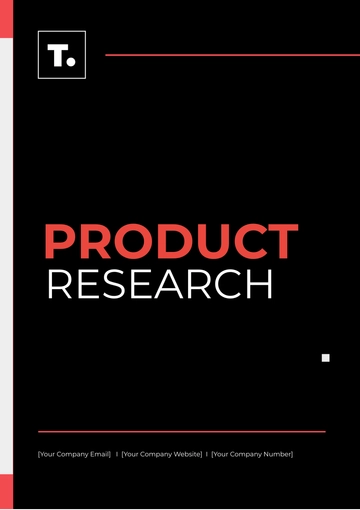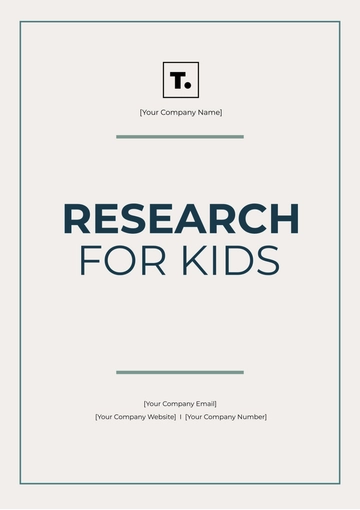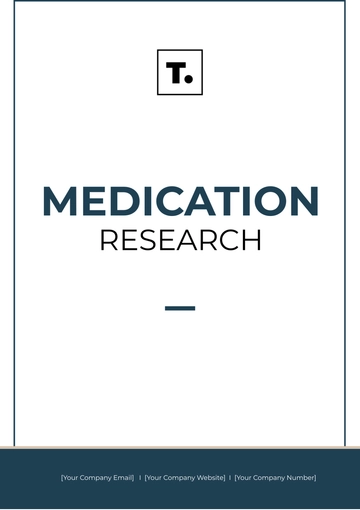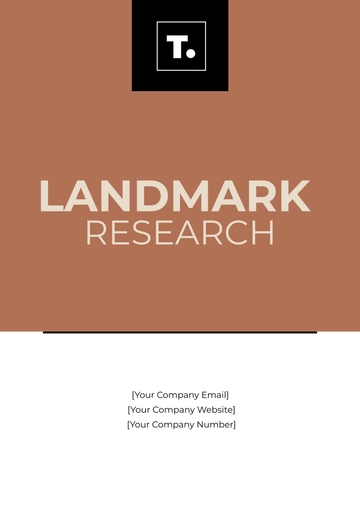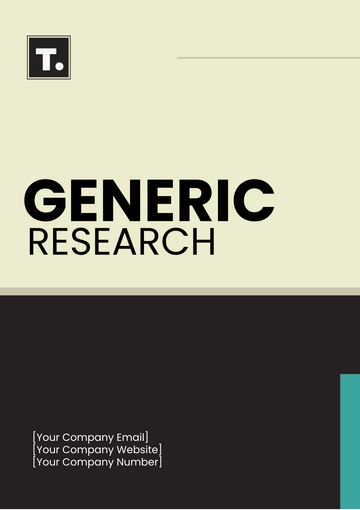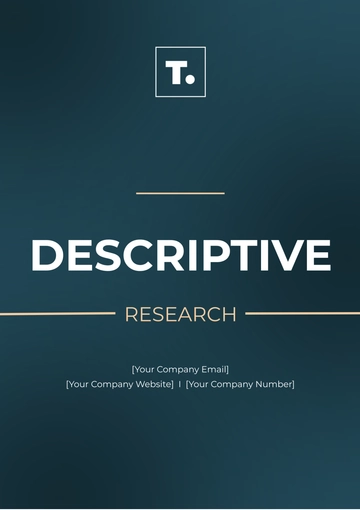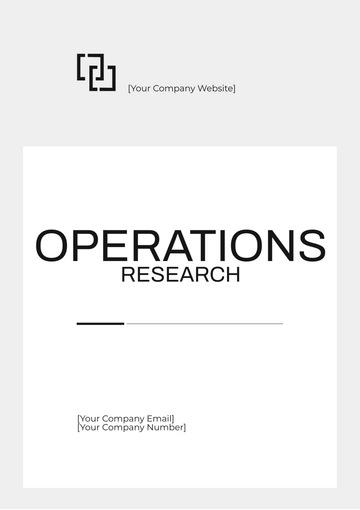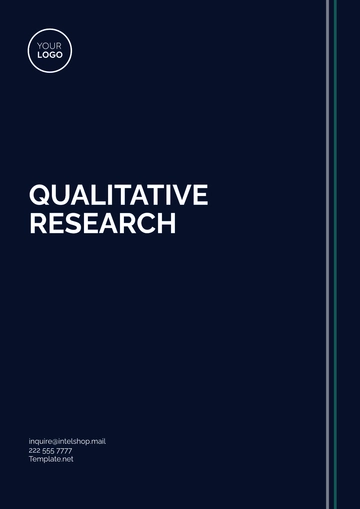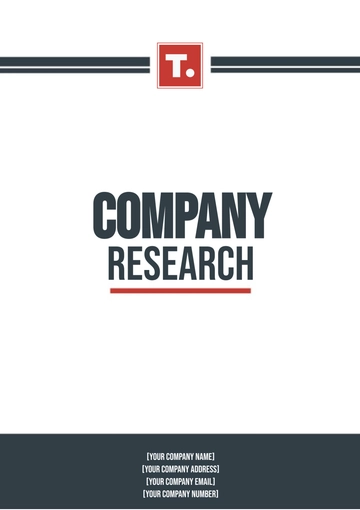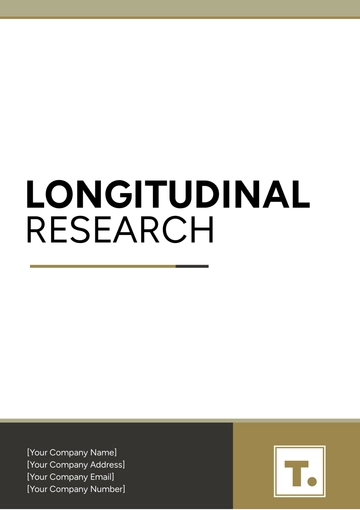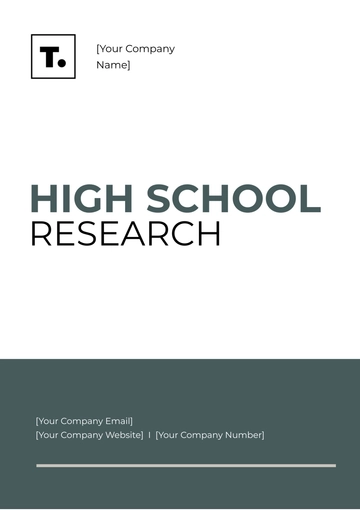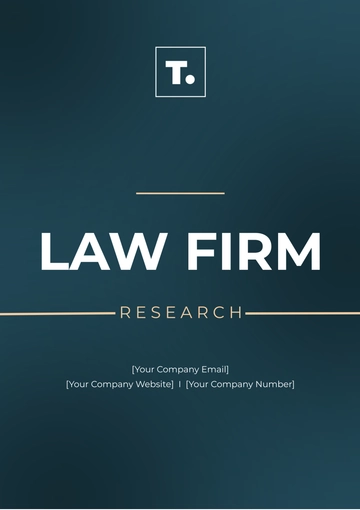Free Finance Detailed Payroll Research
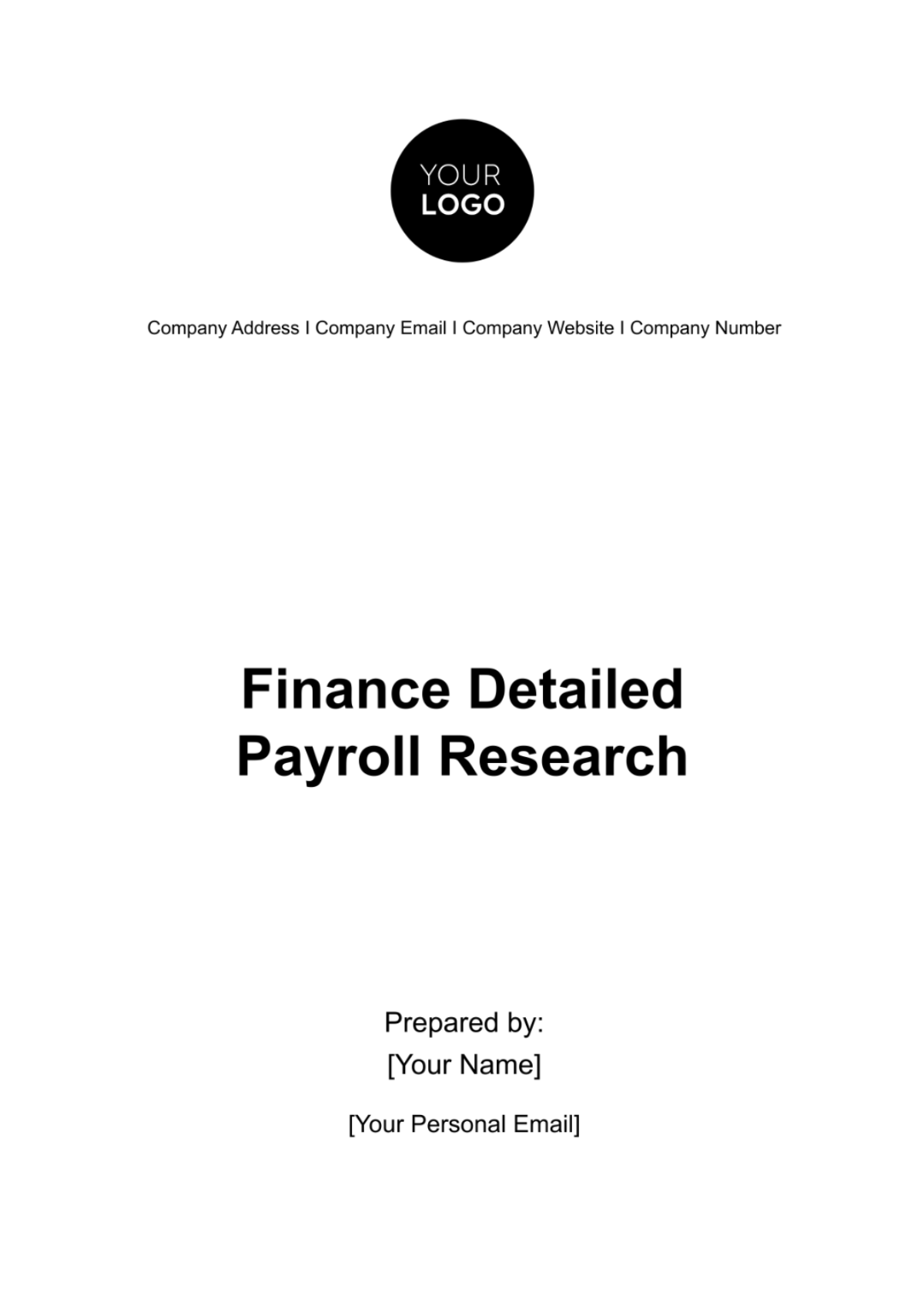
TABLE OF CONTENTS
I. Overview of the Current Payroll System
II. Payroll Compliance and Regulatory Framework
A. Tax Law Compliance
B. Labor Law Adherence
C. Record-Keeping and Data Privacy
III. Cost Analysis of Payroll Operations
A. Payroll Processing Costs
B. In-House vs. Outsourcing Analysis
C. Areas for Cost Savings
IV. Employee Compensation and Benefits Analysis
A. Compensation Structure Overview
B. Benefits Program Evaluation
C. Employee Satisfaction Assessment
V. Recommendations for System Improvement and Optimization
A. Software Upgrade Proposals
B. Compliance Enhancement Strategies
C. Cost Efficiency and Employee Satisfaction
I. Overview of the Current Payroll System
Existing System Description
At [Your Company Name], our existing payroll system strikes a balance between automation and manual oversight. Designed for bi-weekly disbursement, the system adeptly manages the payroll cycle, ensuring timely and accurate payment to our employees. This hybrid approach allows for the flexibility of manual checks and corrections while leveraging the speed and accuracy of software tools for routine calculations and processes. The bi-weekly schedule has been optimized to align with our financial planning cycles and employee expectations, contributing to a stable and predictable payroll operation.
Payroll Software Analysis
Our current payroll software, [Payroll Software Name], plays a pivotal role in streamlining our payroll processes. It efficiently handles critical tasks such as accurate tax calculations, the generation of detailed pay slips, and facilitating direct deposits to employee accounts. An in-depth review of the software's performance reveals its robust capability in managing standard payroll tasks. However, limitations have been noted in its handling of complex scenarios like bonus calculations and retroactive pay adjustments. This analysis helps us in identifying areas where the software could be enhanced or supplemented with additional tools to meet our evolving payroll needs.
Payroll Team Structure
The backbone of our payroll system is the dedicated team comprising a payroll manager, two accountants, and an administrative assistant. This team structure has been crafted to ensure a division of responsibilities that maximizes efficiency and accuracy. The payroll manager oversees the entire operation, ensuring compliance and strategic alignment, while the accountants manage the day-to-day processing and reconciliation tasks. The administrative assistant supports the team with data entry and employee queries. A recent evaluation of the team's workflow has indicated a high level of efficiency, though opportunities for further training and development have been identified to keep pace with the latest payroll practices and technologies.
II. Payroll Compliance and Regulatory Framework
This section outlines [Your Company Name]'s adherence to payroll compliance and regulatory standards. It encompasses our commitment to tax law compliance, labor law adherence, and rigorous record-keeping and data privacy practices, ensuring we meet all legal requirements and maintain the highest standards of ethical payroll management.
A. Tax Law Compliance
[Your Company Name]'s payroll system has been rigorously reviewed and confirmed to be fully compliant with IRS regulations concerning federal tax withholdings and reporting. This compliance extends to meticulous adherence to state and local tax laws, ensuring that all payroll-related tax obligations are met accurately and timely. Furthermore, our regular internal audits and consultations with tax experts ensure that the company stays updated with any changes in tax legislation, avoiding potential legal complications and penalties. This proactive approach not only maintains compliance but also positions us to adapt swiftly to any tax law amendments.
Beyond adhering to existing regulations, [Your Company Name] actively plans for potential tax changes that could affect payroll processing. This includes engaging in strategic tax planning to optimize employee benefits in a tax-efficient manner. Our approach involves continuous dialogue with tax authorities and staying abreast of legislative changes that might impact payroll tax. This forward-looking strategy not only ensures ongoing compliance but also positions us to leverage tax efficiencies, benefiting both the company and our employees.
B. Labor Law Adherence
The company's payroll practices are in strict compliance with the Fair Labor Standards Act (FLSA), particularly regarding overtime pay and adherence to federal minimum wage laws. Additionally, our payroll processes are tailored to meet the unique labor law requirements of each state where we operate, thereby safeguarding against any legal disputes or fines. Regular training sessions for the payroll team ensure they are well-versed in these laws and their nuances. This thorough understanding and application of labor laws not only protect the company from legal risks but also reinforce our commitment to fair and ethical employment practices.
Alongside federal and state compliance, [Your Company Name] also pays close attention to nuances in local labor laws, especially in diverse jurisdictions where local ordinances might differ from state laws. Our proactive approach includes regular legal consultations and employee training programs focused on labor law awareness. This comprehensive adherence to labor laws not only minimizes legal risks but also fosters a work environment based on respect and fairness, enhancing our reputation as an employer.
C. Record-Keeping and Data Privacy
Our payroll record-keeping is structured to meet and exceed the standards set by the Department of Labor. This includes maintaining accurate and comprehensive records of employee work hours, wages, and other pertinent payroll information. In terms of data privacy, our protocols are in line with the General Data Protection Regulation (GDPR) and other relevant data protection laws. This ensures the utmost security and confidentiality of employee data, preventing unauthorized access and data breaches. Regular reviews and updates of our data privacy practices are conducted in response to evolving digital threats, keeping our data protection measures robust and up-to-date.
To further fortify our data privacy measures, [Your Company Name] employs advanced encryption and cybersecurity protocols to safeguard payroll data. Regular cybersecurity training for payroll staff and periodic audits of our data protection systems are standard practices. This vigilant approach to data privacy extends beyond compliance, underlining our commitment to protecting sensitive employee information in an era where data breaches are increasingly common.
III. Cost Analysis of Payroll Operations
This section provides a detailed analysis of the costs associated with [Your Company Name]'s payroll operations. It includes a breakdown of payroll processing costs, a comparison between in-house processing and outsourcing, and identifies potential areas for cost savings.
A. Payroll Processing Costs
Breakdown of costs includes software licensing fees, personnel salaries, and incidental expenses. The total annual cost of payroll operations has been calculated.
Cost Component | Description | Annual Cost |
Software Licensing Fees | Fees for payroll software subscription. | $15,000 |
Personnel Salaries | Salaries for payroll team members. | $120,000 |
Training Expenses | Costs for training staff on new updates and regulations. | $5,000 |
Equipment and Supplies | Office supplies and equipment maintenance for payroll processing. | $3,000 |
Miscellaneous Expenses | Other incidental expenses like auditing services. | $2,000 |
Total Annual Cost | $145,000 |
B. In-House vs. Outsourcing Analysis
A comparative analysis suggests in-house processing is more cost-effective than outsourcing, considering the size and complexity of [Your Company Name]'s payroll.
Aspect | In-House Processing | Outsourcing |
Annual Cost | $145,000 | $200,000 |
Control & Confidentiality | High - Direct control over data and processes. | Moderate - Dependent on third-party policies. |
Customization | High - Tailored processes to company needs. | Low - Standardized services. |
Expertise | Dependent on the in-house team's skill set. | High - Access to specialized skills. |
Flexibility | High - Easier to adapt to changes. | Low - Changes might incur extra costs. |
C. Areas for Cost Savings
Identified potential savings in automating certain manual processes and renegotiating software licensing terms.
Potential Saving | Strategy | Expected Benefit |
Automation of Manual Processes | Implementing advanced software features for tasks like data entry. | Reduces labor hours, minimizing errors. |
Renegotiating Software Licenses | Negotiating more favorable terms with the software provider. | Can lower annual software costs. |
Staff Training Efficiency | Streamlining training processes using online resources. | Decreases training costs and time. |
Paperless Payroll System | Moving to a completely digital payroll system. | Cuts down on supplies and storage costs. |
Energy Efficiency in Operations | Implementing energy-saving practices in the office. | Reduces utility bills and promotes sustainability. |
IV. Employee Compensation and Benefits Analysis
This section provides a detailed analysis of the compensation and benefits structure at [Your Company Name]. It includes an evaluation of our compensation items in comparison to industry standards, an in-depth look at our benefits program, and an assessment of employee satisfaction with these offerings.
A. Compensation Structure Overview
Analysis of salary scales, hourly rates, and bonuses. Comparison with industry standards to ensure competitive compensation.
Compensation Item | [Your Company Name] | Industry Average | Notes |
Salary Scales | Average salary: $60,000 | $58,000 | Slightly above industry average. |
Hourly Rates | Average rate: $30/hr | $28/hr | Competitive within the industry. |
Annual Bonuses | Average 10% of salary | 8% of salary | Higher than industry standard. |
Stock Options | Offered to senior staff | Commonly offered | Aligns with industry practices. |
Commission Rates | Up to 5% of sales | Up to 6% of sales | Slightly below industry average. |
B. Benefits Program Evaluation
The benefits package, including health insurance and retirement plans, aligns with market trends. Employee utilization and satisfaction rates have been assessed.
Benefit Item | Utilization Rate | Employee Satisfaction | Notes |
Health Insurance | 95% utilization | 88% satisfaction | Well-received, comprehensive coverage. |
Retirement Plans (401k) | 90% utilization | 85% satisfaction | Competitive matching contributions. |
Paid Time Off | Fully utilized | 92% satisfaction | Highly valued by employees. |
Professional Development | 60% utilization | 75% satisfaction | Opportunities for more engagement. |
Work-Life Balance Programs | 50% utilization | 70% satisfaction | Interest in more diverse options. |
C. Employee Satisfaction Assessment
Feedback indicates high satisfaction with compensation, but a desire for more diverse benefits, such as flexible working arrangements and wellness programs.
Feedback Area | Details |
Compensation Levels | Generally positive feedback on salary and hourly rates. |
Bonus Structure | Employees appreciate the generous bonus scheme. |
Benefits Diversity | Desire expressed for a broader range of benefits like childcare support and wellness programs. |
Work Flexibility | High demand for more flexible working options, including remote work. |
Development Opportunities | Employees seek more in-depth professional development and training programs. |
V. Recommendations for System Improvement and Optimization
This section provides strategic recommendations for enhancing [Your Company Name]'s payroll system. It focuses on proposals for software upgrades, strategies to enhance compliance, and initiatives to improve cost efficiency and employee satisfaction, ensuring the payroll system's continual evolution and alignment with the company’s needs.
A. Software Upgrade Proposals
To elevate our payroll processing to the next level of efficiency and accuracy, it is recommended that [Your Company Name] upgrades to [Advanced Payroll System]. This state-of-the-art system offers superior automation capabilities, including real-time data processing and advanced analytics. The upgrade promises to streamline payroll operations, reduce the likelihood of errors, and provide more detailed reporting features. Implementing this system could significantly reduce the time and resources spent on payroll management, freeing up the team to focus on strategic financial tasks.
B. Compliance Enhancement Strategies
Given the ever-changing landscape of payroll-related laws and regulations, it's imperative to enhance our compliance framework. Regularly scheduled compliance training sessions for the payroll team are recommended to ensure they are up-to-date with the latest legal requirements. Additionally, instituting periodic internal and external audits will provide an extra layer of assurance that our payroll processes remain in compliance. These strategies will not only safeguard [Your Company Name] against legal risks but will also reinforce our reputation as a responsible employer.
C. Cost Efficiency and Employee Satisfaction
To enhance cost efficiency, the introduction of more automated processes within our payroll system is proposed. This automation will minimize manual interventions, thereby reducing the scope for errors and the resultant costs. Furthermore, based on the employee satisfaction survey, it is recommended to evaluate and potentially expand our employee benefits offering. Introducing diverse benefits such as wellness programs and flexible work options could significantly boost employee morale and retention. Investing in employee satisfaction is not only beneficial for the workforce but also translates to higher productivity and company loyalty.
These recommendations aim to optimize [Your Company Name]'s payroll system by leveraging technology, ensuring compliance, and aligning payroll practices with employee needs and company goals. Implementing these suggestions will position the payroll department to contribute more effectively to the company's overall success.
- 100% Customizable, free editor
- Access 1 Million+ Templates, photo’s & graphics
- Download or share as a template
- Click and replace photos, graphics, text, backgrounds
- Resize, crop, AI write & more
- Access advanced editor
Uncover a smart solution with Template.net's Finance Detailed Payroll Research template. This editable, highly customizable tool, formulated exclusively for your payroll needs, streamlines administrational processes remarkably. Editable in our Ai Editor Tool, this template provides unmatchable precision and accuracy. Boost productivity, optimize time, and embrace easy payroll computations. Challenge your finance administration today!


